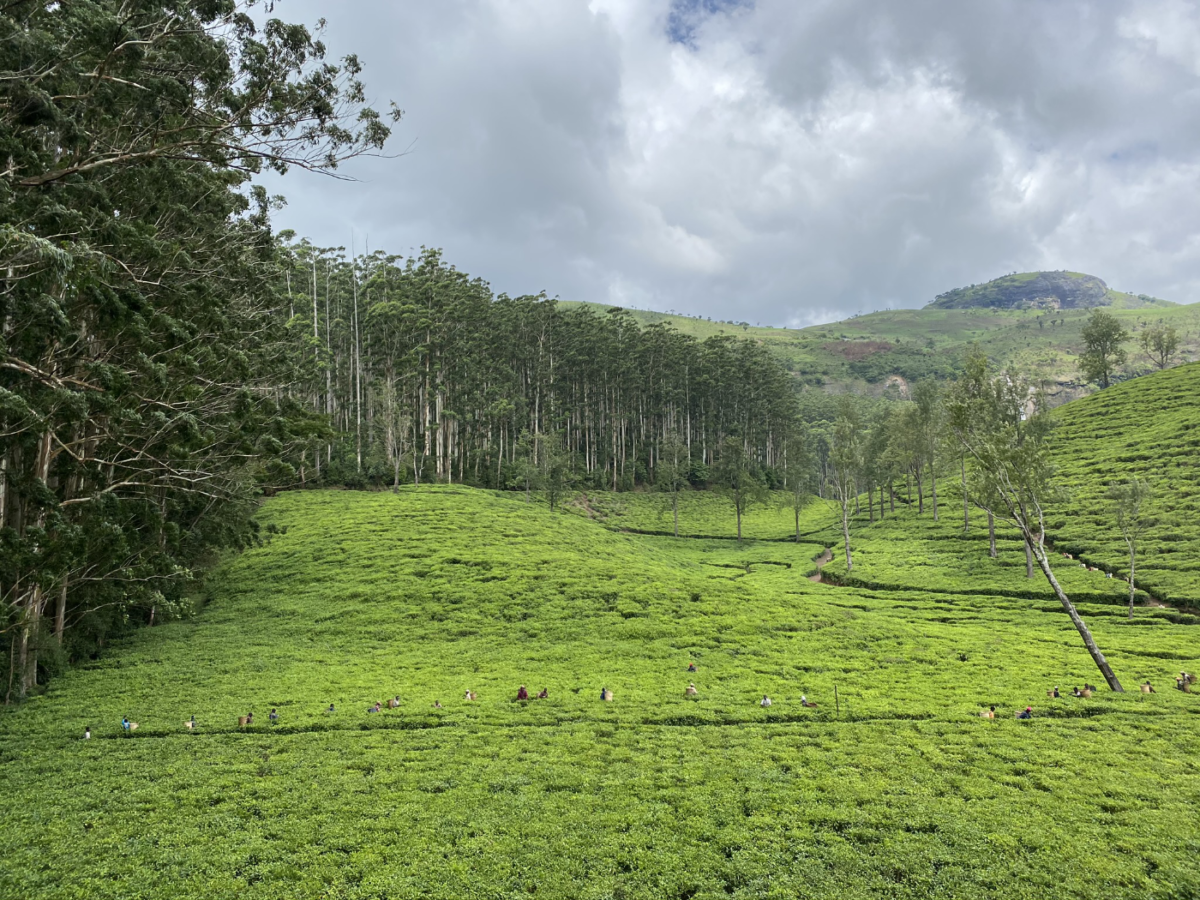
Gurúè, Mozambique
Portuguese influence at the inception of the tea trade is lost to history but deeply etched in the early adoption of tea in places like Goa, Portugal’s first territorial possession in Asia, and the discovery of Galle and Colombo in Ceylon (Sri Lanka) in 1505. Portuguese sea captains prized tea as a beverage and a precious cargo decades before the Chinese began trading with the Netherlands and a century before the English weighed anchor in Amoy.
Nowhere is Portugal’s investment in tea more evident than Mozambique, a coastal expanse in East Africa discovered in 1497 by navigator Vasco Da Gama. The explorers who landed on Mozambique’s 1,600-mile (2,500 km) coast, situated across narrow straits from the island of Madagascar, found a temperate land of rolling hills and low mountains below the equator.
By the early 1900s, Portugal saw an opportunity in tea cultivation in Mozambique. The first plantations were established in the 1920s and quickly expanded to make Mozambique Africa’s largest tea-producing country by the 1950s. Sadly, the fight for independence (1964-74) led to a 15-year civil war that decimated the tea industry.
Organic Rebirth
“Mozambique is the best-kept secret in the tea world,” says Mohit Agarwal, Director at the Asia Tea Group, owners of Cha de Magoma and the Monte Metilile brand. Cha de Magoma is the world’s largest certified bio-organic tea garden.
“Consumers have not been exposed to Mozambique as the tea was only being used in blends in conventional teas,” he explains. “Teas from here blend very well with the Sri Lankans or the Indian teas. Now we are exposing the full bouquet, and it’s just delicious as a single-origin tea — fantastic for consumption without milk and sugar,” said Agarwal.
The estate is located near Gurúè in the shadow of the Namuli mountain range that rises to 7,900 feet (2,419 meters). The foothills of Zambezia province are a haven for tea estates that make tea one of the country’s most important exports. There were a total of 112,000 acres under tea (45,129 ha) in 2019. There are six tea companies headquartered in Gurúè producing several locally distributed and regional brands. Cha de Magoma is the country’s largest tea exporter.
Cha de Magoma was planted in the 1930s with 2,000 hectares under tea. When Agarwal first visited a decade ago an estimated 39,000 hectares of Mozambique’s plantations were overgrown and abandoned. Trees that had not been pruned for decades rose tall above the brush and weeds amid facilities stripped of equipment and burned. The looted hulk of Cha de Magoma’s tea factory was all that remained standing.
Mozambique is tropical and warm, with a dry, cooler season from May until October and a wet, hot season from November until April. It lies outside the zone of erratic weather, rising temperatures, and drought afflicting the upper Rift, where Kenya is experiencing declines in yield and tea quality.
Tasting Notes
Monte Metilile teas are exported to Europe, the UK, the US, China, and Japan. Parent company Asia Tea Group’s primary trading partner in the US is QTrade Teas & Herbs and in Europe Wollenhaupt Tee GmbH and Ludwig H.O. Schroeder & Rudolph Hamann oHG. The Monte Metilile brand is carried by retailers worldwide.
Season’s Pick Mozambique Organic Breakfast Blend
“The teas of Monte Metilile Estate consist of small, well-made leaves that produce a smooth, robust breakfast blend with a toasty aroma and rich mouthfeel. Hints of stone fruit add sweetness to both the aroma and the dark amber cup. Delicious with or without a splash of milk, this organic tea is the perfect choice to accompany something sweet. – Upton Tea Imports
$21 | 250g |
Brewing Time: 2-3 minutes
Brew Temperature: 100°C
Cup: Light brown
Dosage: 1 heaped tsp
Leaf: Beautiful, wiry leaf with golden tips
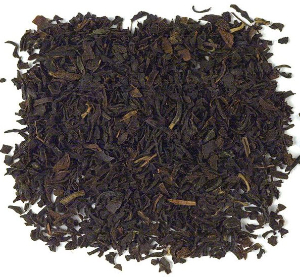
Mozambique Monte Metilile White Tea
A white tea from the same estate as the black. Fine, downy buds. The wet leaf has a very strong aroma of China White teas. The liquor starts light with a hint of apricot color which gets deeper on subsequent steeps. It is soft with strong notes of stone fruits and some strong tea aromatics that you don’t usually get with white tea. The second and third steeps amplified this, with some pleasant bitter notes building into stone fruit/tea taste combinations. – Nothing But Tea
£14 | 50g
Brewing Time: 2 minutes (multiple infusions)
Brew Temperature: 80°C
Cup: Light brown
Dosage: 1 heaped tsp
Leaf: The wet leaf has a very strong aroma, of China White teas.
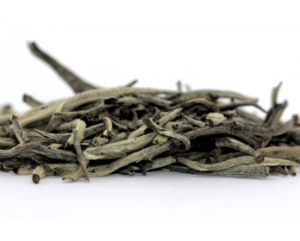
The Asia Tea Group acquired the estate in 2012 intent on mastering the difficult task of large-scale organic tea production.
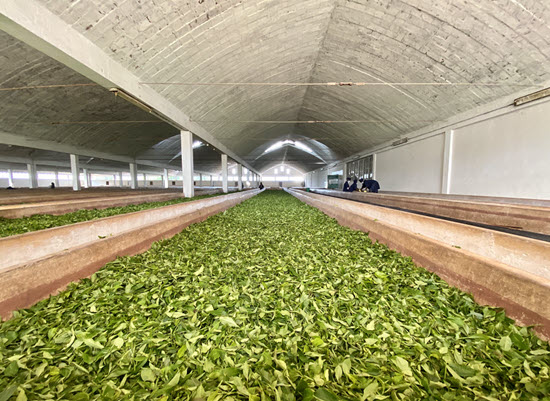
Agarwal was convinced that the combination of red volcanic soil and altitude, rainfall, and seasonality that induces dormancy made the local terroir ideal for producing exceptional teas.
He knew that restoring the tea plants would yield distinct, pleasing flavors because of the climate. The company purchased an abandoned plantation nearby adding 560 hectares of tea and then began several years of rebuilding and restoring the tea bushes.
“The whole idea was to make organic tea affordable and available to the global audience,” he said. “MRL levels and tolerance in most countries have become stringent. Converting this entire site of 2,560 hectares (6,325 acres) of tea into [certified] organic has taken a lot of hard work. We managed to make the entire 2 million kilos of tea we produce available to consumers globally at a very reasonable, affordable price,” he said.
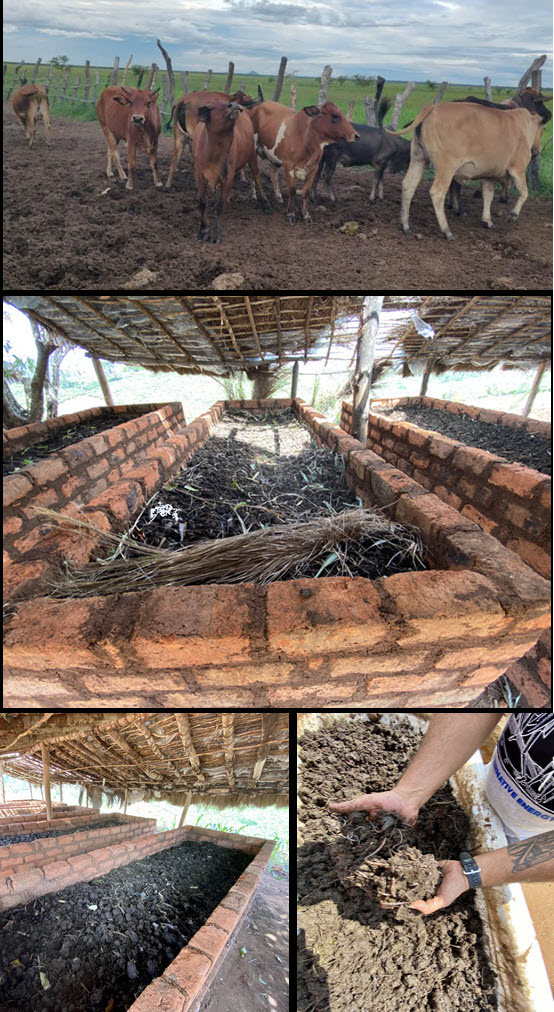
Cha de Magoma will produce 1,100 metric tons of black and green CTC (crush, tear, curl) this year with 900 metric tons of whole and broken leaf black and green teas and five metric tons of premium specialty teas. European distributor Wollenhaupt Tee GmbH describes Monte Metilile’s white tea “as characterized by a light cup color and a pleasantly fruity aroma. A tea which is so completely untypical for the origin Africa. Its long, thin-wire leaves with many silver tips are more reminiscent of a specialty from China.”
Making Organic Compost
“The natural ecosystem that we have here is ideally suited to operate any plantation without chemicals or fertilizers,” he explains. “We have a lot of green cover planted in citronella, Guatemala grass, neem, we have 6,000 hectares of land,” said Agarwal.
During a video tour of the tea garden, Agarwal explained that “initially we thought we could outsource organic bio-compost and bio-fertilizer from Europe or America, but we decided against it.” Instead, we decided to grow everything we needed within the estate, he said.
“So, we started a dairy farm,” he said proudly, pointing to a herd of 50 cows mooing nearby. “We dedicated one hectare of organic grassland for every head of cattle and make the milk available to workers on the estate who produce cheese, ghee, and butter. We grow organic maize and millet to feed them, one advantage of the vast land which we own,” he said. Workers also harvest estate-grown pineapple, banana, sugarcane, and many organic fruits and vegetables.
Synthetic fertilizers concentrate 15 times more nitrogen than plant-based compost, and while cow dung contains about 3% nitrogen, 2% phosphorus, and 1% potassium, it still takes tons and tons of ground cover to fertilize the average tea garden. Cha de Magoma is gigantic by comparison to the more typical 1,000-hectare estate.
“The application of biomass is done by hand. We planted hundreds of hectares of citronella and Guatemala grass and banana acres and make aerobic compost out of it. “After 45-60 days, we transfer it to the wormy bins and leave it for another 45 to 60 days for an excellent compost that is applied to each bush during the pruning year. Most of our bushes are Chinery [Camellia sinensis-sinensis] out here, which the Portuguese planted. Workers cut a moon shape near the trunk and fill the collar,” he explains.
Self-contained, self-sustained
The plantation is certified by Fair Trade International as well as Fair Trade USA. Since certification in April 2020, the estate’s 5,000 workers have received substantial Fair Trade premiums from customers, funds that have been invested in welfare projects, writes Avinash Gupta, Director of Global Sales at the Asian Tea Group.
The Fair Trade premium committee, for example, purchased an ambulance which is critical to ensure that people get health care when required and improved plumbing to provide clean drinking water.
The next big project is the construction of new buildings for a school to ensure access to education for the children, he said.
Organic certifications include USDA-NOP, EU Bio-Organic, and JAS (Japan). According to Gupta, Rainforest Alliance, Naturland, Non-GMO, and FSSC22000, certifications are in progress and are expected to be in place very soon.
Annual production of two million kilos of tea requires three factory buildings on foundations originally constructed by colonial Portuguese in the 1960s. The factories have since been refurbished and equipped with state-of-the-art machinery. There are two lines of CTC machines in the Monte Metilile factory.
The largest factory, Monte Branco, produces black CTC, green CTC on four lines, and Orthodox black and green teas. The Orthodox factory at Monte Metilile produces black and green teas, oolong, and specialty teas on 30 rolling tables. Equipment includes two-color scanners, a steamer, and a roaster.
There is an abundance of water, enough that Cha de Magoma bottles natural spring water at a water packaging plant on the estate. The mineral water is marketed under the Monte Gúruè brand.
“We are in the process of reviving three hydel power units on our estate. Once completed, the green-powered turbines will fulfill much of our power requirements, said Gupta.
A forest of Eucalyptus covers much of the land, Agarwal said: “We use these forests as a renewable resource of fuel in the factories.”
Cha de Magoma
Buying organic
According to Fortune Business Insights, the global market for organic tea was estimated at $820 million in 2019 and growing at a compounded annual rate of 11.2% that will increase sales to $1.92 billion by 2027. The US market, where organic tea has the highest penetration globally, is currently estimated at $262.6 million. The market is primarily black tea (78% globally) in the US, that percentage increases to 80%. Organic food sales made up 5.8% of total food sales in the US and have grown every year since 2008.
Tea is mainly purchased at grocery and mass-market outlets (80%), where organic tea is not as widely available as conventional tea. Three out of four conventional grocers stock organic goods, and tea is available at 20,000 natural and specialty food stores. The long-standing popularity of at-home consumption increased retail sales of tea bags during the pandemic, which is expected to drive growth in the upcoming years, according to Fortune’s Organic Tea Market report. Research and Markets predicts a slower CAGR of 5.75% during the years 2020-25. According to the report, the Organic Tea Market “is quickly reaching its pre-COVID levels, and a healthy growth rate is expected over the forecast period, driven by the economic revival in most of the developing nations,” according to the report.
“We hope to convert conventional consumers of tea to organic,” said Agarwal. “The barrier for people buying organic teas in the past has been price, he said. “Our target is to provide organic tea very close or at the current price of the conventional teas so it can be marketed and consumed in mass,” says Agarwal. “That is the biggest advantage as Mozambique will offer quality value for money and affordable organic product,” he said. “If I can provide them an organic cup at a measured price, I’ve done what I started out to do,” he said.
Tea Market
Get More Value from Your Tea: BRU Maker One
+41794574278
Jacque's Organics
(647) 804-7263
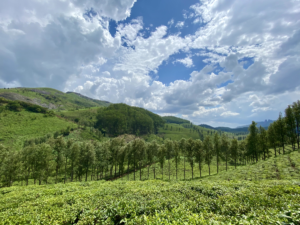
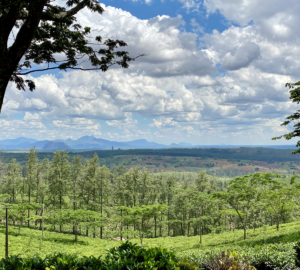

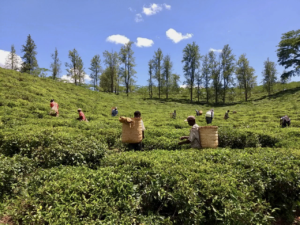
Excellent, highly informative and well presented, both in form and content, which any avid tea drinker and tea lover would look for. AMAZING photography, style and tea knowledge imparted so well that even an amateur in tea field will be fascinated to read through. Keep it up guys!!
ASHOK JAYARAM,
Bangalore, India